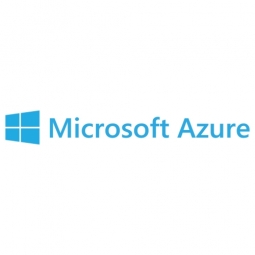技术
- 应用基础设施与中间件 - 事件驱动型应用
- 基础设施即服务 (IaaS) - 私有云
适用行业
- 水泥
- 建筑与基础设施
用例
- 施工管理
- 基础设施检查
服务
- 云规划/设计/实施服务
关于客户
Allegiance Consulting (Pty) Ltd 是一家南非金融科技公司,专门从事复杂的财务规划系统。该公司成立于 1999 年,最初是一个由法律和商业顾问组成的团队,后来不断扩大,囊括了才华横溢的开发人员、宽客和用户体验专家。该公司为南非五家最大的银行和寿险公司提供服务,拥有 37 名员工。 Allegiance Consulting 使用私有云已有 10 多年的历史,并于 2019 年迁移到 Azure 本地基础设施。该公司还计划实现 Azure 上托管的基础设施层的自动化。
挑战
Allegiance Consulting 是一家专门从事复杂财务规划系统的南非金融科技公司,在 COVID-19 健康危机爆发时面临着重大挑战。该公司必须快速适应远程工作环境,并让客户对未来放心。主要挑战包括在安全且可扩展的基础设施上快速开发应用程序以及与同事和客户保持联系。该公司必须使用 Microsoft 的 Blazor 技术为其一个大客户开发一款参与应用程序。该应用程序是一种诊断工具,为在保持安全的同时在财务上处理健康危机提供指导。该公司还必须确保其 37 名全体员工可以通过安全平台进行内部连接并与客户协作。
解决方案
Allegiance Consulting 求助于 Microsoft 解决方案来克服这些挑战。该公司使用 Microsoft 的 Blazor 技术开发了一款参与应用程序,并将其部署在 Microsoft Azure 上,这为金融服务领域的企业级应用程序提供了必要的可扩展性和安全性。该公司还从私有云迁移到 Azure,这使他们能够访问企业级云解决方案,并允许他们在任何给定时间点扩展或缩减应用程序。为了与同事和客户保持联系,该公司使用 Microsoft Teams 作为主要沟通平台。该公司还计划自动化其托管在 Azure 上的基础设施层,以在无需人工交互的情况下启动新环境,并使用 Azure DevOps 作为基础管道层进行连续部署。
运营影响
数量效益

Case Study missing?
Start adding your own!
Register with your work email and create a new case study profile for your business.
相关案例.

Case Study
System 800xA at Indian Cement Plants
Chettinad Cement recognized that further efficiencies could be achieved in its cement manufacturing process. It looked to investing in comprehensive operational and control technologies to manage and derive productivity and energy efficiency gains from the assets on Line 2, their second plant in India.

Case Study
IoT System for Tunnel Construction
The Zenitaka Corporation ('Zenitaka') has two major business areas: its architectural business focuses on structures such as government buildings, office buildings, and commercial facilities, while its civil engineering business is targeted at structures such as tunnels, bridges and dams. Within these areas, there presented two issues that have always persisted in regard to the construction of mountain tunnels. These issues are 'improving safety" and "reducing energy consumption". Mountain tunnels construction requires a massive amount of electricity. This is because there are many kinds of electrical equipment being used day and night, including construction machinery, construction lighting, and ventilating fan. Despite this, the amount of power consumption is generally not tightly managed. In many cases, the exact amount of power consumption is only ascertained when the bill from the power company becomes available. Sometimes, corporations install demand-monitoring equipment to help curb the maximum power demanded. However, even in these cases, the devices only allow the total volume of power consumption to be ascertained, or they may issue warnings to prevent the contracted volume of power from being exceeded. In order to tackle the issue of reducing power consumption, it was first necessary to obtain an accurate breakdown of how much power was being used in each particular area. In other words, we needed to be able to visualize the amount of power being consumed. Safety, was also not being managed very rigorously. Even now, tunnel construction sites often use a 'name label' system for managing entry into the work site. Specifically, red labels with white reverse sides that bear the workers' names on both sides are displayed at the tunnel work site entrance. The workers themselves then flip the name label to the appropriate side when entering or exiting from the work site to indicate whether or not they are working inside the tunnel at any given time. If a worker forgets to flip his or her name label when entering or exiting from the tunnel, management cannot be performed effectively. In order to tackle the challenges mentioned above, Zenitaka decided to build a system that could improve the safety of tunnel construction as well as reduce the amount of power consumed. In other words, this new system would facilitate a clear picture of which workers were working in each location at the mountain tunnel construction site, as well as which processes were being carried out at those respective locations at any given time. The system would maintain the safety of all workers while also carefully controlling the electrical equipment to reduce unnecessary power consumption. Having decided on the concept, our next concern was whether there existed any kind of robust hardware that would not break down at the construction work site, that could move freely in response to changes in the working environment, and that could accurately detect workers and vehicles using radio frequency identification (RFID). Given that this system would involve many components that were new to Zenitaka, we decided to enlist the cooperation of E.I.Sol Co., Ltd. ('E.I.Sol') as our joint development partner, as they had provided us with a highly practical proposal.

Case Study
Splunk Partnership Ties Together Big Data & IoT Services
Splunk was faced with the need to meet emerging customer demands for interfacing IoT projects to its suite of services. The company required an IoT partner that would be able to easily and quickly integrate with its Splunk Enterprise platform, rather than allocating development resources and time to building out an IoT interface and application platform.

Case Study
Bridge monitoring in Hamburg Port
Kattwyk Bridge is used for both rail and road transport, and it has played an important role in the Port of Hamburg since 1973. However, the increasing pressure from traffic requires a monitoring solution. The goal of the project is to assess in real-time the bridge's status and dynamic responses to traffic and lift processes.

Case Study
Bellas Landscaping
Leading landscaping firm serving central Illinois streamlines operations with Samsara’s real-time fleet tracking solution: • 30+ vehicle fleet includes International Terrastar dump trucks and flatbeds, medium- and light-duty pickups from Ford and Chevrolet. Winter fleet includes of snow plows and salters.








